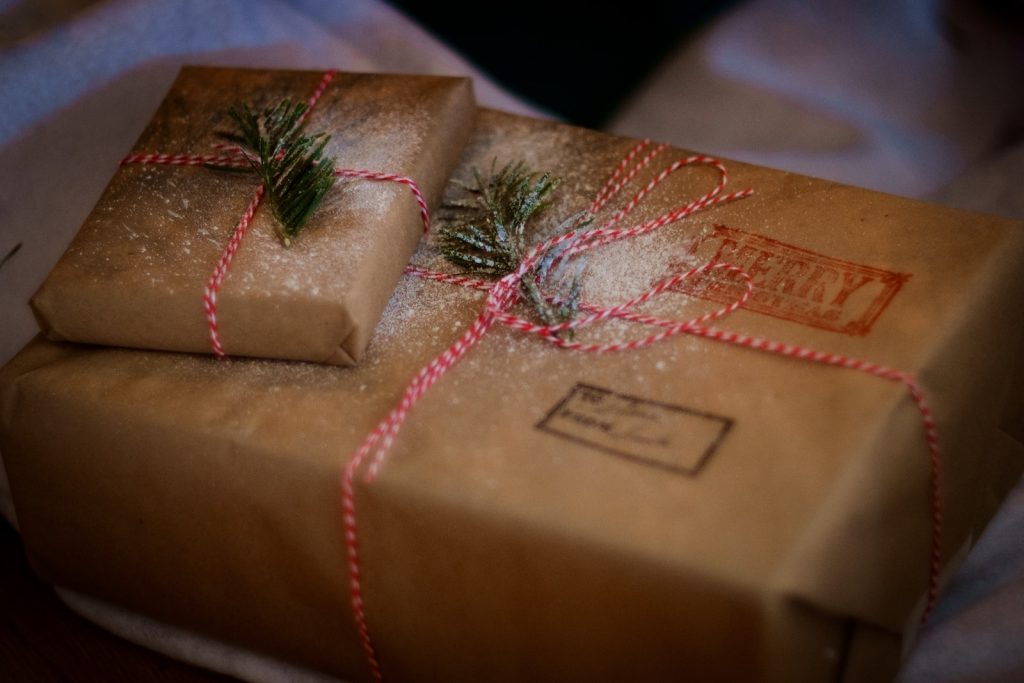Chocolate has a rich and varied history that stretches back to ancient civilizations. The Mayans and Aztecs prized cacao, the source of chocolate, for its restorative and invigorating properties, often using it in ceremonial and royal contexts. As chocolate made its way to Europe and evolved into a sweet indulgence, it became synonymous with luxury and a symbol of affection and esteem. This transformation was further propelled during the Victorian era when it was popularized as a token of romantic sentiment, particularly on Valentine’s Day. Its cultural significance as a gift has only deepened over the centuries, intertwined with expressions of love, gratitude, and celebration.
The allure of chocolate as a gift lies in its almost universal appeal. Its myriad textures and flavors can be tailored to suit a wide spectrum of tastes and preferences. From the robust intensity of dark chocolate, the creamy mellowness of milk chocolate, to the sweet delicacy of white chocolate, there is a variety to satiate every palate. Moreover, the sheer indulgence of chocolate – its velvety smoothness as it melts on the tongue – evokes a sensory delight that few other gifts can match. This, coupled with beautifully designed packaging, elevates chocolate to a thoughtful and cherished gift.
Chocolate’s symbolism extends beyond its delectable taste. It has come to embody love, celebration, and comfort. The act of gifting chocolate denotes a warmth and consideration, be it a heart-shaped chocolate box on Valentine’s Day, a chocolate bunny on Easter, or a comforting chocolate bar during trying times. It’s a small yet poignant gesture that transcends cultural and linguistic barriers, conveying affection, joy, or consolation in a universally understood language of sweetness.
Selecting the Right Chocolate



The quest for the perfect chocolate gift begins with an understanding of the different types of chocolate and their unique flavor profiles. Dark chocolate, known for its higher cocoa content, offers a rich, intense cocoa flavor with varying degrees of sweetness. Its depth and complexity are often appreciated by connoisseurs. Milk chocolate, on the other hand, is sweeter and creamier, often preferred for its smooth and comforting taste. White chocolate, devoid of cocoa solids, offers a sweet and creamy flavor, providing a delightful contrast to its darker counterparts.
Selecting high-quality chocolate is imperative for a truly appreciated gift. Characteristics to look for include a short ingredients list with a high percentage of cocoa, indicating fewer additives and a purer chocolate experience. The origin of the cocoa beans also plays a pivotal role in the chocolate’s flavor profile, with beans from different regions imparting distinct flavors and aromas. Premium chocolates often boast of single-origin or estate beans, providing a unique tasting experience akin to fine wine.
Moreover, it’s vital to consider the dietary restrictions and personal preferences of the recipient. Nowadays, there are myriad options catering to vegan, gluten-free, and nut-free diets, ensuring that the joy of receiving chocolate as a gift can be enjoyed by all. By paying attention to these details, one can select a chocolate gift that not only delights the senses but also resonates with thoughtfulness and consideration, enhancing the gifting experience manifold.
Presentation Matters
The art of gifting chocolate:
- Presentation:
- Enhances the gifting experience.
- Aesthetic appeal: Reflects the thought and care put into the gift.
- Creative packaging ideas: Can vary from elegant boxes to whimsical, themed packages.
- High-quality materials: Including appealing colors and designs elevate the gift’s visual appeal.
- Personal Touch:
- Amplifies sentimental value: Makes the gift special.
- Personalized messages: Engraved or printed on the chocolate or packaging for unique expressions.
- Customizations: Tailoring the chocolate assortment or packaging based on the recipient’s preferences.
- Pairing with Complementary Gifts:
- Creates a curated gift bundle: Enhances the joy of receiving.
- Examples: Pairing chocolate with wine, gourmet coffee beans, or books.
- Reflects understanding: Indicates a deep consideration of the recipient’s tastes and preferences.
Supporting Ethical and Sustainable Chocolate Brands
In a world increasingly conscious of ethical sourcing and sustainability, choosing to gift chocolate from brands that prioritize these values holds significant meaning. It reflects a level of awareness and responsibility, adding a layer of depth to the gesture of gifting. Supporting chocolate brands that engage in ethical sourcing practices ensures fair treatment of farmers and workers in the cocoa industry. Moreover, brands that are committed to environmental sustainability contribute to the preservation of biodiversity and reduction of harmful impacts on the planet.
When selecting ethically sourced and sustainably produced chocolate, looking for certifications such as Fair Trade and Rainforest Alliance can provide assurance of the brand’s commitment to these values. These certifications signify adherence to stringent standards that promote fair labor practices, community development, and environmental conservation.
Specialty and Artisanal Chocolates



Venturing into the realm of gourmet and artisanal chocolates opens up a world of exquisite and distinctive gifting possibilities. Specialty chocolates, often handcrafted by skilled chocolatiers, offer a unique blend of flavors, textures, and aesthetic appeal. The meticulous attention to detail, from the sourcing of high-quality, ethically sourced ingredients to the artistry in design and presentation, sets artisanal chocolates apart from mass-produced varieties.
Gifting specialty chocolates from reputable chocolatiers or specialty chocolate shops reflects a discerning taste and an appreciation for the fine art of chocolate-making. It offers the recipient a chance to indulge in a luxurious and uncommon chocolate experience, making the gift memorable and cherished. Recommendations for reputable chocolatiers and specialty chocolate shops can be sought from connoisseurs or reputable food and gourmet publications, ensuring a choice that embodies quality and artistry in the delightful realm of chocolate.
Storing Chocolate
The allure of chocolate lies in its pristine quality and the sensory pleasure it provides. Ensuring that chocolate retains its fine texture and flavor profile is essential, and proper storage is key to this endeavor. Chocolate should be stored in a cool, dry place away from strong odors, as it can absorb scents easily. A temperature range of 60-70°F with a relative humidity below 50% is often ideal to prevent any adverse effects on the chocolate.
A common concern with chocolate storage is the appearance of ‘bloom,’ which manifests as a whitish coating on the chocolate’s surface. Bloom can be of two types: fat bloom, resulting from changes in the fat crystals in the chocolate, and sugar bloom, caused by the crystallization of sugar on the surface due to condensation. While bloom may affect the chocolate’s appearance, it doesn’t indicate spoilage and the chocolate remains safe to consume.
Melting is another concern especially in warmer climates or during summer months. If chocolate melts and then re-solidifies, it may have a different texture or appearance, but it will still retain its flavor.
Experiencing Chocolate
Receiving chocolate as a gift is a delightful experience, but savoring it elevates the pleasure manifold. Encouraging the recipient to take their time to appreciate the chocolate’s complex flavors and textures can transform the act of chocolate consumption into a mindful, enjoyable ritual.
The art of tasting chocolate is akin to that of wine tasting, involving a holistic sensory engagement. It begins with the appearance—well-tempered chocolate should have a glossy finish and a good snap. The aroma plays a significant role in the tasting experience, with high-quality chocolate offering a complex bouquet of scents. The texture, whether smooth, grainy, or somewhere in between, tells a lot about the chocolate’s quality and preparation. Lastly, the taste, which unfolds in stages revealing the chocolate’s flavor profile, acidity, sweetness, and any additional flavor notes, culminates the tasting experience.
Navigating Seasonal and Themed Gifting
The art of gifting chocolate becomes especially delightful when tailored to different seasons, occasions, or themes. Festivities and holidays present an opportunity to explore themed chocolate molds, designs, and packaging that resonate with the celebratory spirit. For instance, heart-shaped chocolates for Valentine’s Day, egg-shaped or bunny-shaped chocolates for Easter, or beautifully wrapped chocolate gift boxes during the Christmas season add a whimsical touch to the occasion.
Moreover, seasonal flavors can be incorporated into the chocolate, such as peppermint or gingerbread during the winter holidays or floral-infused chocolates during spring. The packaging too can reflect the season or occasion with colors, designs, and themes that evoke the celebratory mood or the essence of the season. This attention to detail in tailoring the chocolate gift makes the gesture all the more thoughtful and enjoyable, enhancing the overall gifting experience.

